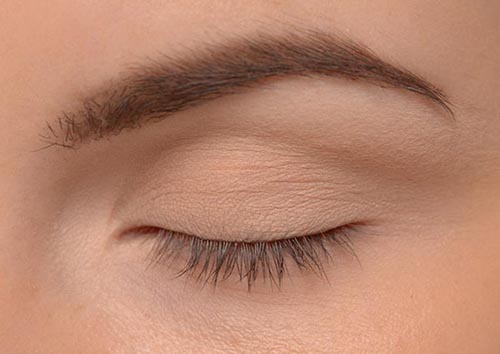There are three widely recognized types of eye spasms that are often described as twitches: a basic eyelid twitch, essential blepharospasm, and hemifacial spasm. None of these conditions are life-threatening, but when they become a regular part of your daily existence, they may cause a great deal of stress, and both essential blepharospasm and hemifacial spasm can lead to more significant complications.
EYELID TWITCH
 Most of us are familiar with the basic eyelid twitch. It typically affects only one eye at a time, but on rare occasions may affect both eyes. An eyelid twitch poses no long-term risk of complications and usually resolves on its own within minutes, or at worst, after a few days. In fact, this type of spasm is so minor, there is typically no need for direct treatment. If you regularly suffer from eyelid spasm, you may find some relief in improving your sleep habits, reducing stress, and limiting your caffeine intake. If you find this spasm bothersome, a warm compress or lubricating eye drops may help alleviate any irritation.
Most of us are familiar with the basic eyelid twitch. It typically affects only one eye at a time, but on rare occasions may affect both eyes. An eyelid twitch poses no long-term risk of complications and usually resolves on its own within minutes, or at worst, after a few days. In fact, this type of spasm is so minor, there is typically no need for direct treatment. If you regularly suffer from eyelid spasm, you may find some relief in improving your sleep habits, reducing stress, and limiting your caffeine intake. If you find this spasm bothersome, a warm compress or lubricating eye drops may help alleviate any irritation.
ESSENTIAL BLEPHAROSPASM
Essential blepharospasm may start out feeling like an eyelid twitch, but it is actually a specific condition that can become progressively worse if left untreated. While an eyelid twitch usually involves one eye at a time, essential blepharospasm involves both eyes and begins with an increased rate of blinking. Eventually, the blinking increases both in rate and in magnitude to the point that it begins to close the eyelids, and the muscles of the eyes squeeze shut during blinking. On rare occasions, this squeezing shut can become so frequent and pronounced that it impedes vision.
Thankfully, essential blepharospasm can be treated. The most successful treatment option is typically botulinum toxin injections, which is commonly referred to as Botox. The injection is very small (less than the amount normally used in cosmetic procedures to treat wrinkles), and is injected into the spasming muscles around the eyes. The effects last for several months, but eventually wear off. Typically, the injections must be repeated between three and four times per year. Side effects are extremely rare, and typically include drooping eyelids or double vision, which resolve within a week or two. If the botulinum toxin therapy ceases to work, or if the spasms are too severe, surgery may be needed to remove the problematic muscles.
HEMIFACIAL SPASM
While eyelid twitching and essential blepharospasm are minor conditions, hemifacial spasm is significantly more serious as it includes neurological processes within the brain that cause involuntary closure of one eye as well as contraction of the muscles of the face and neck on the affected side. While botulinum toxin injections may help with hemifacial spasm symptoms, only a neurosurgical procedure is able to relieve the facial spasms. Such surgery is usually successful, but this is a significant operation that may have serious potential complications.
WHEN TO SEE YOUR DOCTOR
Your doctor at Silverstein Eye Centers is happy to see if you suffer from any eye twitching or other eye symptoms. However, you should definitely make an appointment with your eye doctor right away if you experience any of the following:
- Eyelid twitching that lasts for more than one week
- Twitching that causes your eyelid to close entirely
- Twitching that involves muscles in other parts of the face or neck
- Redness, swelling, or discharge from the eye
- Upper eyelid drooping
- Visual disturbances
To make an appointment with your Silverstein Eye Centers specialist, call us today at 816-358-3600. We look forward to helping you with any and all eye-related concerns.